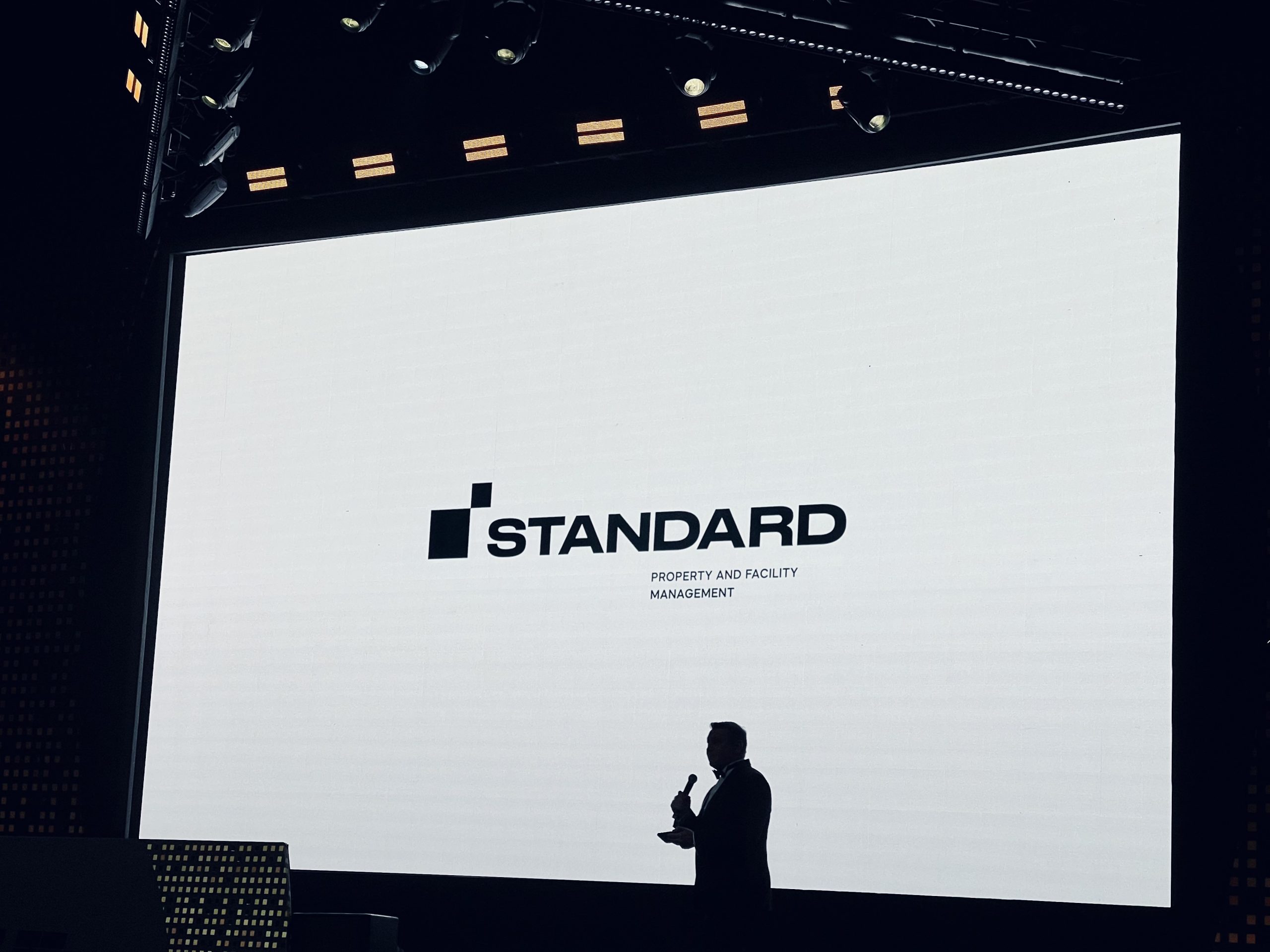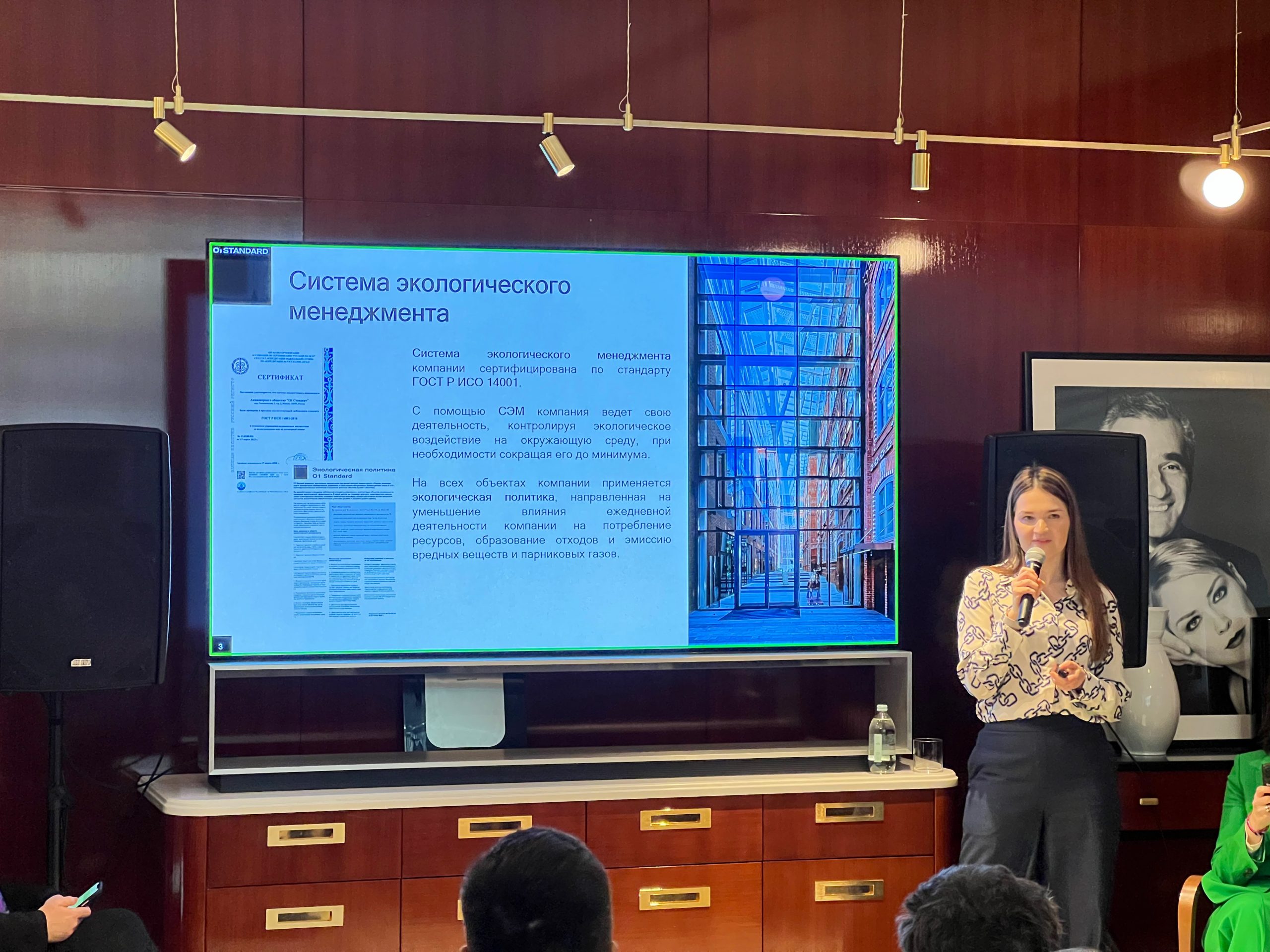Interview with Dmitry Sveshnikov, Managing Director of O1 Standard, which manages over a million square metres of office real estate in Moscow.
Flexible spaces, automation, reconception, security, remote working have all become synonymous with modern offices. Changing approaches to the organization of office space have also transformed standards in the management of business centres. The role of management companies has increased, as they are now expected to respondpromptly and efficiently to ever more requests from tenants. Organizing courier deliveries, supervising office renovations, certifying buildings to green standards, and implementing digital solutions are just a small sample of the tasks that management companies have to address today.
Dmitry Sveshnikov, Managing Director of O1 Standard, discussed the one-window principle, robotization of offices and their green future in an interview with RBC-Real Estate.
The pandemic has changed the life of society and business, including everything to do with offices. Dmitry, could you pick out three basic differences in office management before the pandemic and after?
DS. I would single out three key differences in professional office management before and after the pandemic. Firstly, there is more communication between tenants and the management company, and the process of communication has got more transparent and efficient – now you need to respond to a request in real time.
The second thing is that the role of the management company has increased and, as a result, the range of services provided by the management company has expanded. Tenants are reducing communication with third-party contractors to a minimum – they prefer to contact the management company directly with their requests. Tenants are asking for things they didn’t ask for before, so management companies are providing services they didn’t provide before.
The third thing about office management that has clearly changed is digitalization. According to expert estimates, demand for digital technologies and services has grown tenfold during the pandemic. As a service company, we couldn’t help being involved in this process.
These are probably the three biggest trends – the things we are working on most intensively right now.
The manpower shortage is another issue. It’s hard to find good technicians and engineers with the necessary training to work on high-class office property. We are trying to get more specialists onto the market by working with training institutions and hiring their graduates.
— You said that tenants are requesting more services. What are these new services?
DS. A lot of questions from tenants are about new amenities and services at business centres – parcel collection lockers, contactless food delivery, where to leave garments for dry cleaning, shoe repairs, car maintenance. Building users want the maximum range of services without leaving the business centre. Also some tenants have used the pandemic to reconceptualize their office space – setting up flexible work stations, places for teamwork, etc. And the transition to remote work has left administrative directors wondering how to supervise all the contractors that served their offices, how to monitor construction and installation work. All these questions get passed on to the management company.
At the same time, the management company has to keep providing the services it always provided – building maintenance, repair work, and so on. Demand for these services is still high. Really, we are now working on a “one window” principle, where we are the window.
— Could you explain what the one-window principle means? How does it work?
DS. One-window office management means that tenants obtain a full range of services for managing and operating their office – from cleaning to supervision of construction work and environmental certification – via one manager at one company. So the tenants themselves don’t need to go looking for a lot of contractors and then coordinate the work schedules and rules with the management company.
This works much more smoothly if you have unified software that coordinates action by the management company to meet multi-format requests from tenants. It’s surprising that building management still depends mostly on an old-fashioned system of phone calls and Exel spread sheets. During the pandemic we worked hard on solutions to automate the operations of the management company, with special focus on the system for handling tenant requests. This helped us to cope efficiently with the challenges of remote work.
— You named digitalization among the key changes in office management. The pandemic really has changed office practice as regards automation and robotization. How is this reflected in your projects?
DS. The pandemic has driven the development of digital solutions. Owners were implementing proptech solutions even before the pandemic, but mainly in new buildings and mostly in the premium segment, where the return on investments is easier to predict. Today, though, these technologies are becoming the norm for everything: they aren’t just limited to contactless readers for building access, motion sensors and temperature control stations.
We are now looking into more complex solutions, like a technology that lets you automatically open the door of a building, let a person through the turnstile and send him a lift already programmed to bring him to the right floor. We are also looking at access control systems that don’t just open the turnstile by means of a pass, but also measure body temperature. If a person has a fever, access to the business centre will be denied.
— You manage nearly 20 business centres and more than half of them have green certification (BREEAM and others). Do you see a request from landlords for such environmental initiatives?
DS. The trend towards green buildings is well established in western countries and it is taking off in Russia too. All new business centres in Moscow are now brought into use with green certificates. This year we decided to expand the list of O1 Standard services by appointing a specialist to our team who can carry out certification of buildings to the BREEAM, LEED, Well and FitWel environmental performance standards. We offer these services to both building owners and administrative directors of tenant offices. We are experiencing growth of requests for this service.
Very often, tenants submit a request for environmental certification when they are carrying out a reconception of their office. We now have a new generation of employees who are more concerned about environmental issues, and it matters to them that their office meets environmental performance standards for things like separate collection and sorting of waste, responsible purchasing policy and practice, and technologies to reduce consumption of natural resources. Also there is more understanding nowadays of the connection between environment-friendly technologies and comfort: green technologies create a safer and healthier environment for people by regulating natural light, air quality, levels of humidity, landscaping, etc.
— But many existing buildings that don’t have green certificates. Can they be made more sustainable?
DS. Existing buildings can and should be improved and certified. They can be certified when they are already operational – by the BREEAM In-Use system, for example. The appraiser who carried out the audit will give specific recommendations on what aspects of the building can be improved. As a rule, these are lighting, the water supply system, motion sensors, separate waste collection and some other things. Use of space inside the building and landscaping of the grounds are also important.
Our portfolio includes positive examples of certification of buildings already in operation and also of redevelopment projects – the Stanislavsky Factory and LeFORT business centres (originally built at the turn of the 19th and 20th centuries) and Krugozor, which was built in the Soviet period.
— Thinking about the future of offices – in your opinion, will there be as much demand for them as there was before the pandemic? And what will be the criteria for a successful business centre? Will they still be location and price?
DS. I am convinced that demand for offices will remain strong. Yes, formats will change and the share of flexi-offices will increase (there aren’t enough of them now, as we can see from our tenants). But there will still be demand for classic offices as well.
As regards the criteria for a successful office, the technology level of the business centre and its environmental performance are new aspects in addition to price and location. Meeting the new criteria will give a competitive advantage to the owner, because they will mean that the management company can provide high-quality services to tenants.





